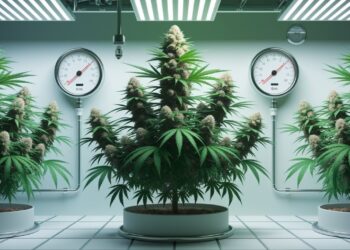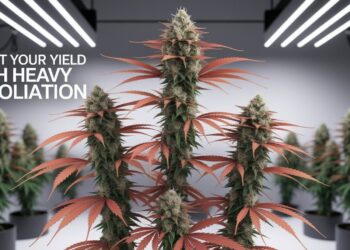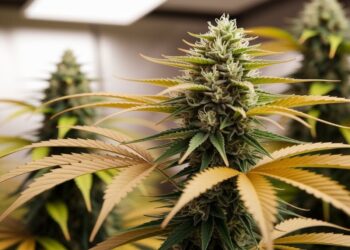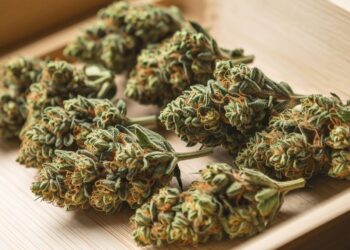Getting your autoflower light schedule right isn’t just a technical detail it’s the difference between a healthy harvest and disappointing growth. I’ve been growing cannabis for over eight years, testing every light cycle you can imagine in small tents, large rooms, and even outdoor hybrids. Trust me, lighting can make or break your yield.
This article is based on real results, not theory. We’ll cover the three most popular schedules, 18/6, 20/4, and 24/0, and break down exactly how each one affects plant health, energy use, and bud production. You’ll see what’s worked for me and thousands of home growers I’ve advised over the years.
No hype, no one-size-fits-all answers. Just clear, honest insights you can apply to your setup, if you’re running LEDs, CFLs, or HPS. By the end, you’ll be confident in your lighting choices, backed by experience and tested knowledge you can trust.
Introduction to Autoflower Light Schedules
Autoflower cannabis plants don’t depend on light cycles to flower, but choosing the right schedule still impacts growth and yields.
What Makes Autoflowers Different
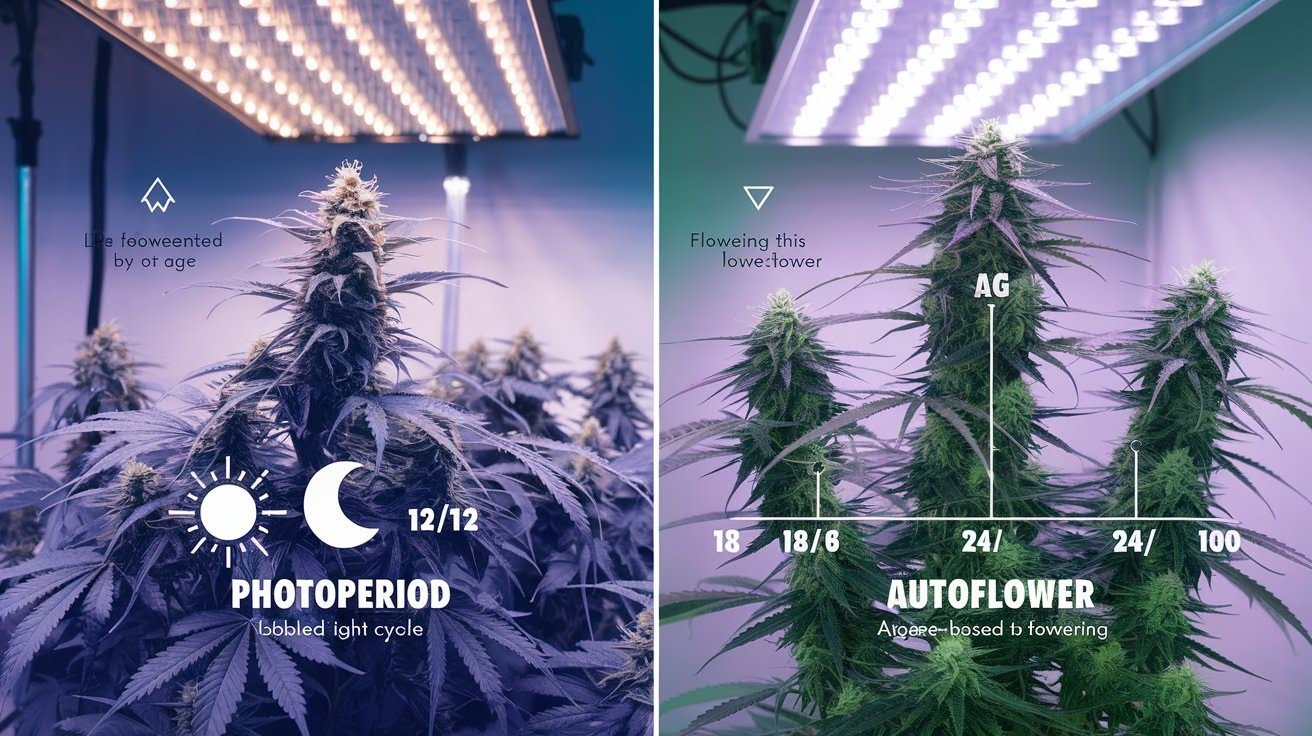
Regular cannabis plants are slaves to light cycles. Give them 12 hours of darkness, and they start flowering. Keep the lights on for 18 hours? They stay in vegetative growth forever. Autoflowers don’t care about your light schedule.
These plants flower based on age, not light exposure. After 3-4 weeks, they automatically switch from vegetative growth to flowering. No matter what you do with your lights.
Here’s where it gets interesting. Photoperiod plants evolved to flower when days got shorter that’s their survival mechanism. They’re waiting for autumn signals.
Autoflowers skip this entirely. They’re on their internal clock. Think of them as plants with a built-in timer. When that timer hits 3-4 weeks, flowering begins.
- 12 hours of light
- 18 hours of light
- 24 hours of continuous light
The plant doesn’t care. This gives you incredible freedom. You can run your lights however works best for your situation. Got expensive electricity during peak hours? Run lights at night.
Want maximum growth? Keep them on 24/7. Need to save on your power bill? Drop down to 18/6. Your autoflowers will continue to grow and flower regardless. That’s the beauty of these genetics, they work around your schedule, not the other way around.
Why Light Schedule Matters
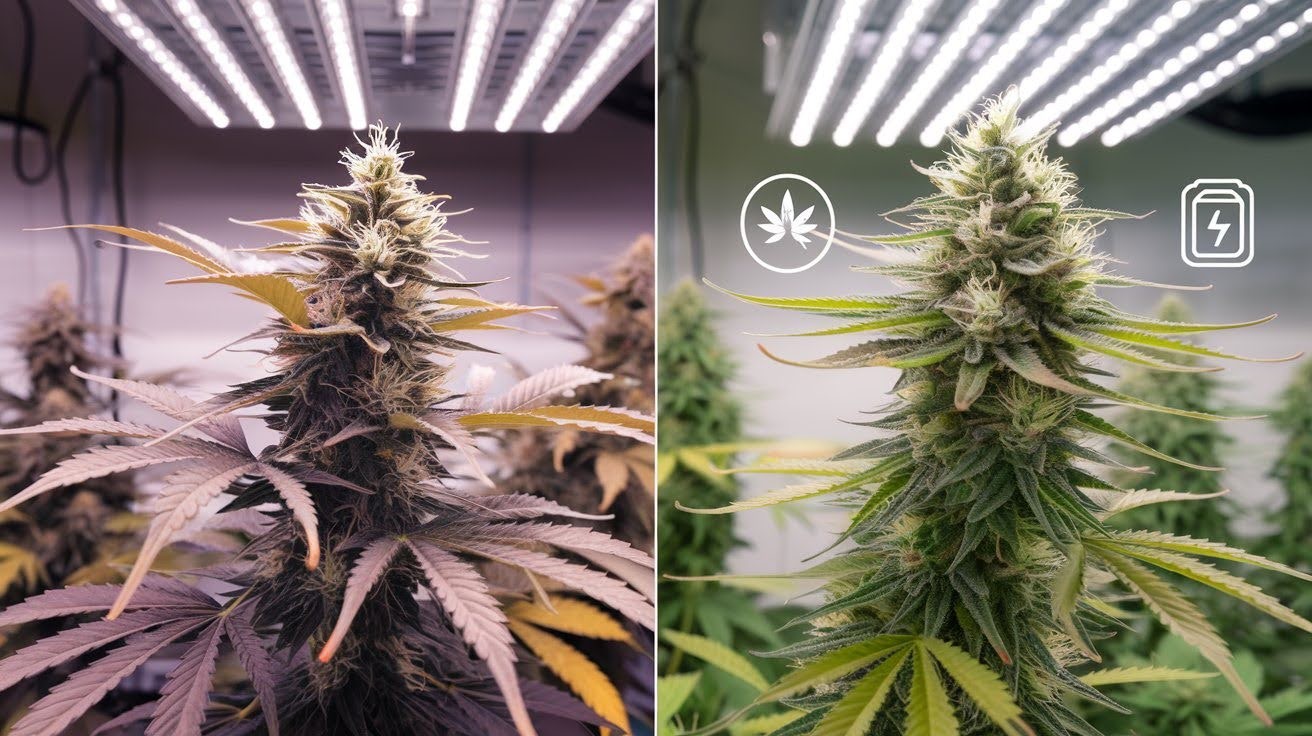
Just because autoflowers are flexible doesn’t mean all schedules are equal. Your light choice directly affects two critical things: how much you harvest and what you pay in electricity bills.
More light generally means bigger plants. But there’s a catch: you hit diminishing returns after a certain point. Running 24/0 might give you 10% more yield than 18/6. But your electricity bill doubles.
That extra 10% rarely pays for the added power costs. Here’s the real question: Is that slight yield increase worth the extra expense?
Innovative growers balance both factors. They find the sweet spot where plants receive enough light to thrive without incurring excessive energy costs.
The Most Popular Autoflower Light Schedules
Three main lighting schedules dominate autoflower growing each offers different benefits for energy costs, plant health, and final yields.
18/6 Light Schedule: The Beginner’s Choice
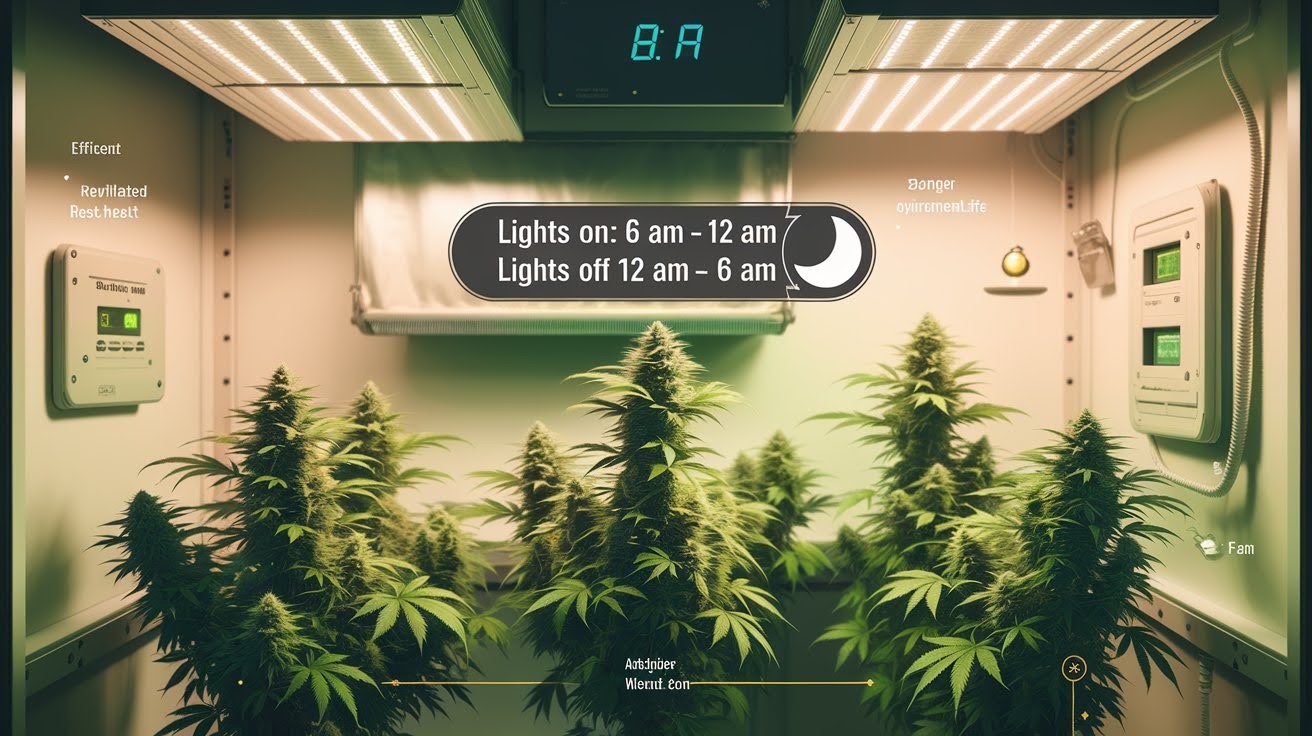
Most new growers start here. And for good reason, 18/6 is forgiving, affordable, and produces solid results. The math is simple: Your lights run for 18 straight hours, then shut off for 6 hours.
Most growers run lights from 6 AM to midnight, allowing plants to experience darkness during the coolest part of the day. You can adjust these times to match your schedule or electricity rates. Some run from 8 PM to 2 PM to avoid peak power costs.
The key is consistency. Pick your schedule and stick to it. Your electricity bill stays reasonable. Compared to 24/0 lighting, you’ll save 25% on power costs immediately.
Heat becomes manageable. Those six dark hours let your grow space cool down naturally. Your fans don’t work overtime. Your plants aren’t stressed by constant heat.
Equipment lasts longer, too. LED lights and ballasts receive a daily break, significantly extending their lifespan. Starting? Go with 18/6. You’ll learn the basics without dealing with heat stress or shocking power bills.
Live somewhere hot? This schedule is your friend. The darkness period prevents your grow tent from becoming an oven. I recommend 18/6 for:
- First-time growers
- Hot summer growing
- Limited ventilation setups
- Budget-conscious growers
Your plants will thrive while you master the fundamentals of cannabis cultivation.
20/4 Light Schedule, The Expert Recommendation
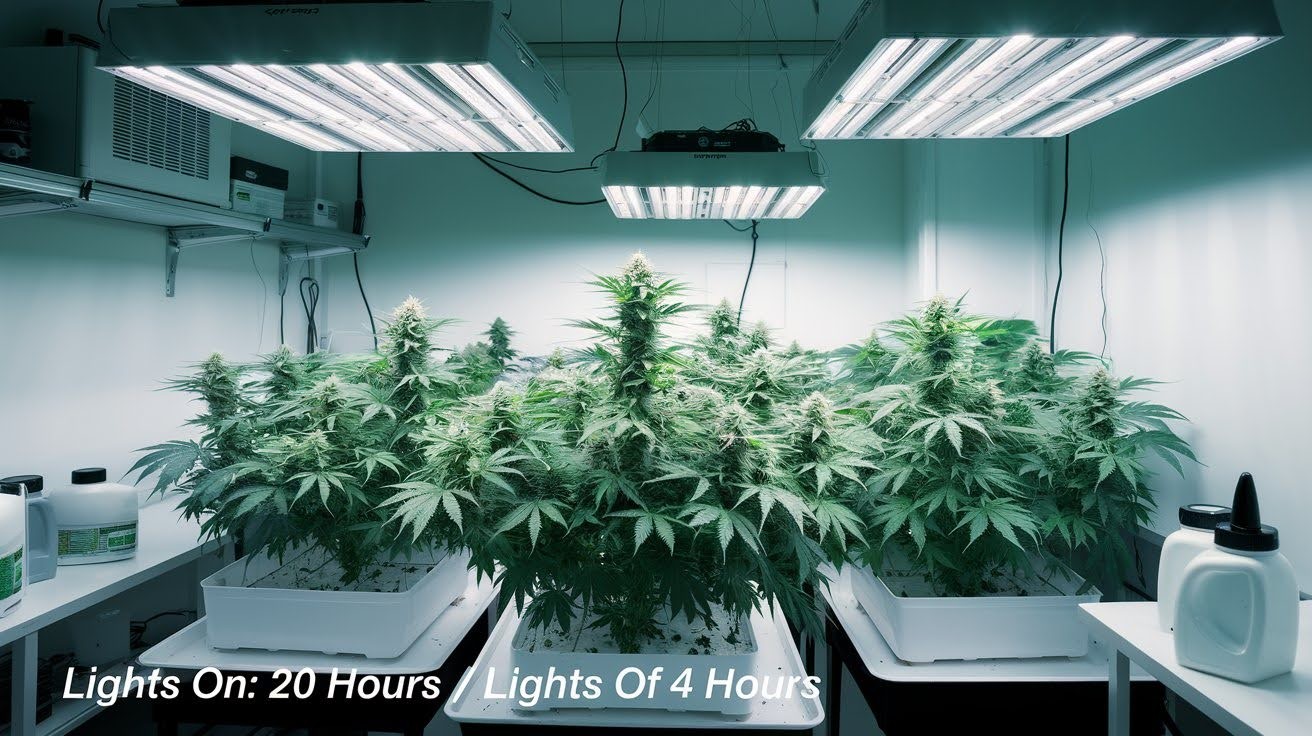
This is where experienced growers land. After years of testing different schedules, most professionals settle on a 20/4 schedule. Ask any commercial autoflower grower they’ll say 20/4. It’s the sweet spot that balances everything perfectly.
Why do experts love it? Because it gives plants almost maximum light without the downsides of continuous lighting. Seed companies often recommend this schedule in their growing guides. That’s not a coincidence.
You get 95% of the growth potential with only 83% of the electricity costs compared to 24/0.
Plants still get rest time. Those four dark hours let them process nutrients and recover from photosynthesis. But it’s minimal downtime.
Heat stays under control better than 24/0, but you still push growth harder than 18/6. Here’s something interesting: Over a complete growth cycle, 20/4 autoflowers receive approximately 1,400 total hours of light.
Compared to photoperiods, they get roughly 1386 hours when you factor in their 18/6 veg and 12/12 flower periods. Your autoflowers get more light than traditional plants. That’s why yields can be surprisingly good with the right genetics.
This schedule maximizes your investment in seeds, nutrients, and time.
24/0 Light Schedule, Maximum Growth
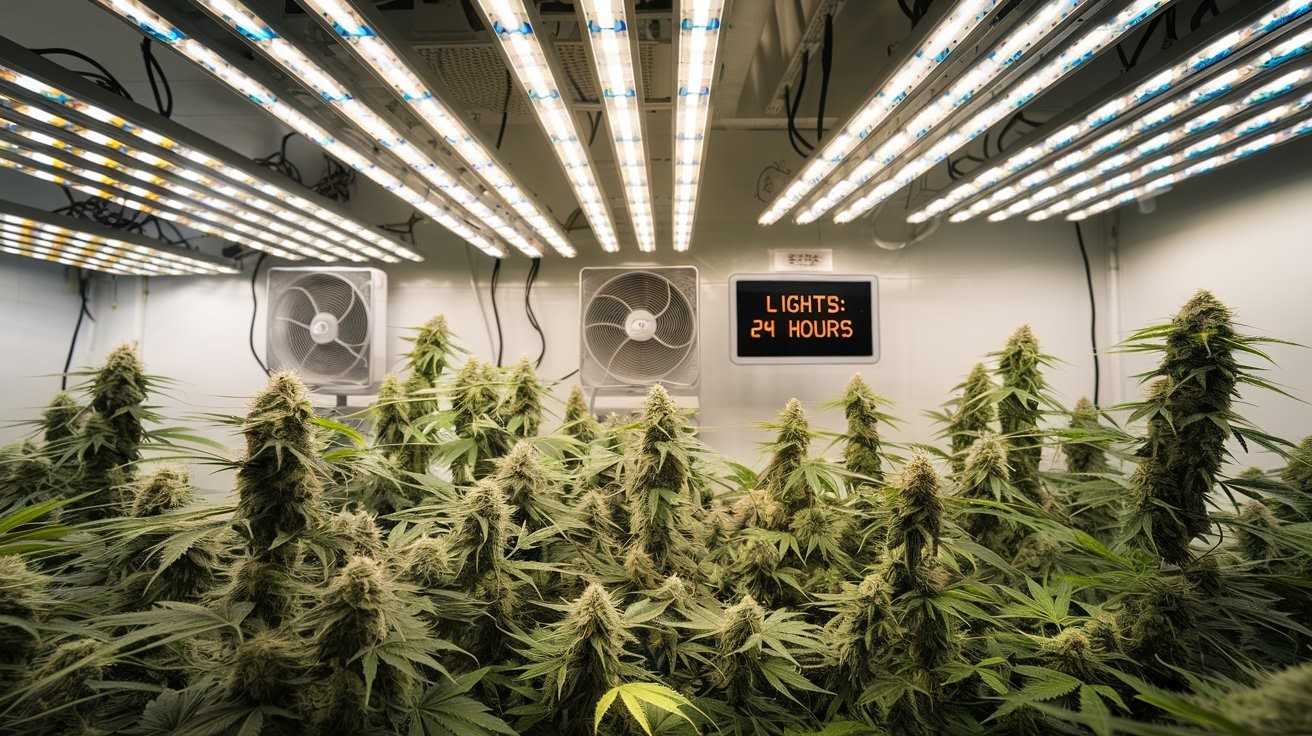
Some growers never turn their lights off. They want every possible hour of photosynthesis for their autoflowers. Your plants never stop growing. Photosynthesis runs 24 hours a day, pushing development to the absolute limit.
Vegetative growth happens faster. Plants reach flowering size more quickly than any other schedule. But here’s the reality check: The difference isn’t as dramatic as you’d expect. 10-15 % faster growth compared to 20/4.
Cold climates love this schedule. Your grow lights double as heaters, keeping plants warm during freezing nights. No temperature swings. Constant light means stable heat output. Your plants stay consistently comfortable.
I use 24/0 in my basement during winter, it’s the only way to maintain proper temperatures without expensive heating systems. Your power bill will hurt. Expect 33% higher electricity costs compared to 18/6 schedules.
Heat becomes a serious problem. Summer growing with 24/0 can be nearly impossible without serious ventilation. Equipment wear increases dramatically. Lights, fans, and ballasts operate continuously with no interruptions.
Your plants may exhibit signs of stress, such as light burn, nutrient lockout, or general fatigue, due to insufficient rest. Use 24/0 only when the benefits outweigh the costs.
Schedule Comparison and Performance
Real-world testing reveals which light schedules produce the biggest harvests, healthiest plants, and best return on your electricity investment.
Yield Differences Between Schedules
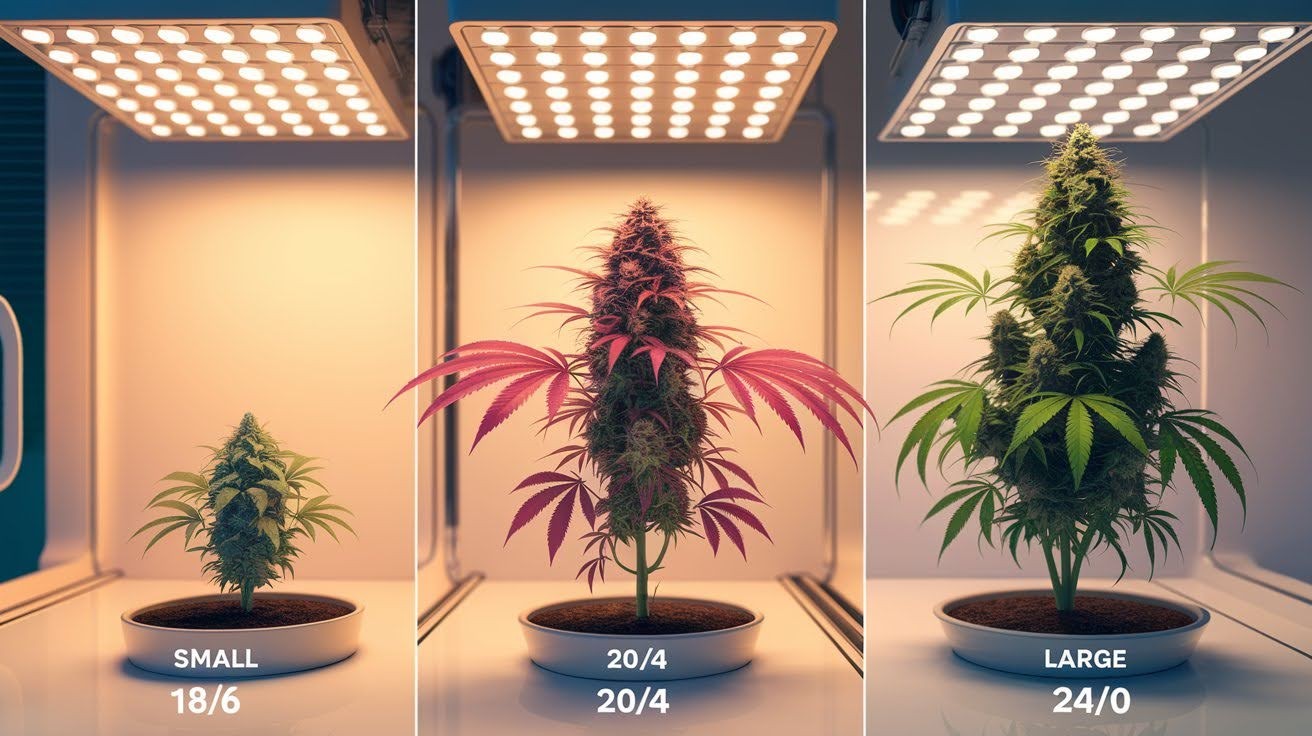
Light hours have a direct impact on your final harvest weight. More light generally means bigger buds, but the relationship isn’t perfectly linear. Never run autoflowers on 12/12. This is the biggest mistake new growers make.
Your yields will be terrible. We’re talking 30-50% smaller harvests compared to proper schedules. Here’s why it fails: Autoflowers don’t need darkness to flower. You’re just wasting potential growth time.
I’ve seen growers get 15 grams per plant on 12/12 when they could have harvested 40+ grams with better lighting. From my testing with identical genetics:
18/6 schedule results:
- Average yield: 35-45 grams per plant
- Electricity cost: Baseline
- Heat stress: Minimal
20/4 schedule results:
- Average yield: 40-50 grams per plant
- Electricity cost: 11% higher than 18/6
- Heat stress: Manageable
24/0 schedule results:
- Average yield: 45-55 grams per plant
- Electricity cost: 33% higher than 18/6
- Heat stress: Significant risk
The sweet spot is clear: 20/4 gives you the best return on investment. You get 90% of maximum yields while keeping costs reasonable and heat manageable. 24/0 only makes sense if electricity is cheap and cooling isn’t an issue.
Energy Efficiency Analysis
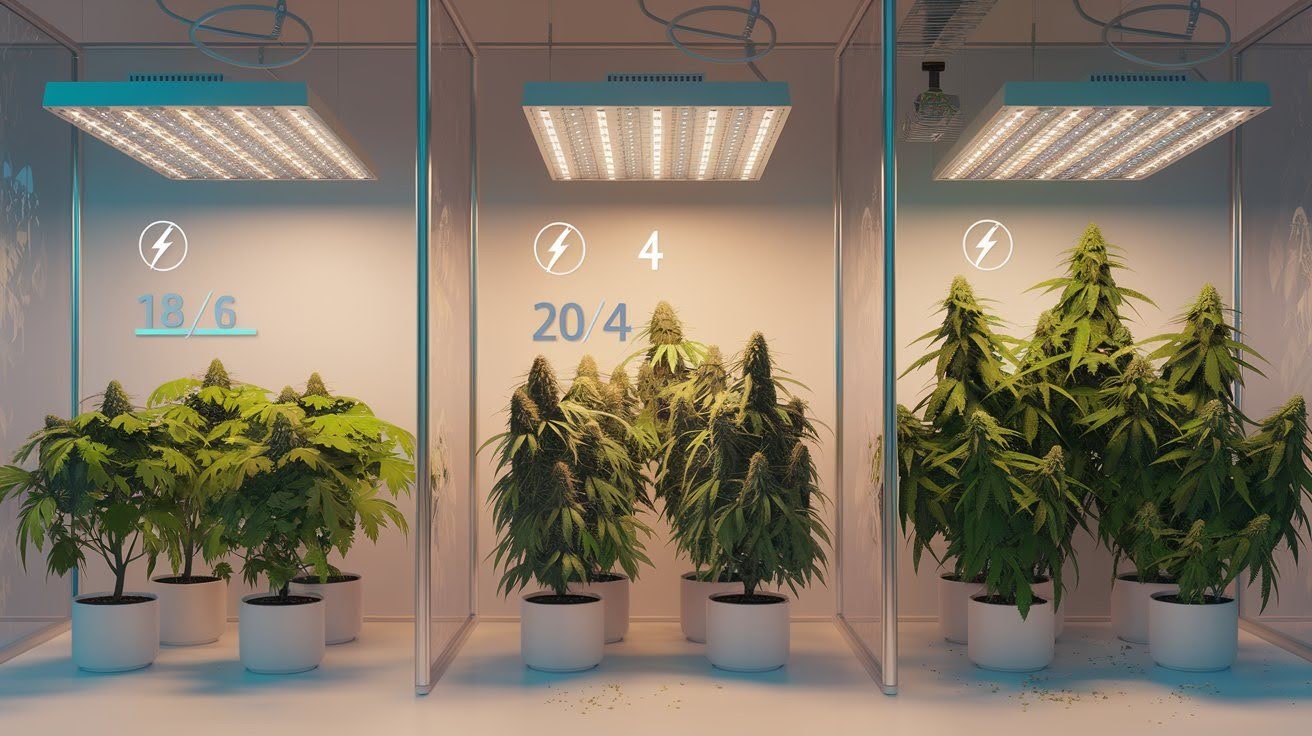
Innovative growers track cost per gram, not just total yield. Getting more bud doesn’t matter if you spend twice as much producing it. 18/6 consistently wins the efficiency game. You spend less electricity per gram harvested than any other schedule.
Here’s the math breakdown:
- 18/6: $2.50 per gram in electricity costs
- 20/4: $2.75 per gram in electricity costs
- 24/0: $3.20 per gram in electricity costs
Those numbers add up fast when you’re growing multiple plants or running continuous cycles.
Plants hit a saturation point around 20 hours. After that, each extra hour of light produces minimal additional growth.
Think of it like feeding someone. The first meal makes a huge difference. The second meal helps too. But the fifth meal? They’re just getting sick. Your plants can only process a certain amount of light energy before they reach their maximum photosynthetic capacity.
Going from 20 to 24 hours costs 20% more electricity but only increases yields by 5-10%.
That’s terrible math for your wallet.
When to Use Each Schedule
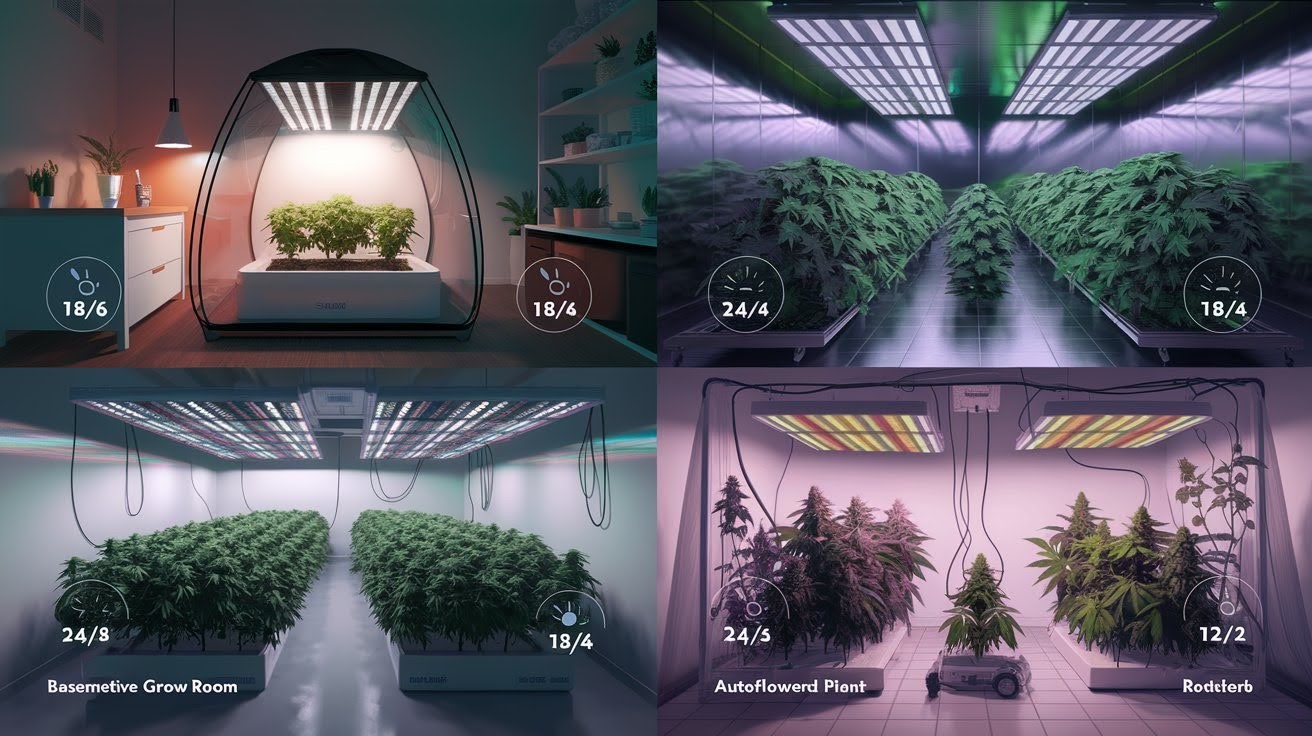
The proper schedule depends on your specific growing situation. What works in Alaska won’t work in Arizona. 18/6 for beginners and energy savings: New to growing? Start here. You’ll learn without dealing with heat stress or shocking electricity bills.
Perfect for tight budgets and apartments with limited ventilation. 20/4 for yield optimization: This is your commercial choice, maximum returns on your investment in seeds, nutrients, and space.
Use 20/4 when you want serious harvests but still need reasonable power costs.
24/0 for cold environments: Winter growing in basements or garages? Continuous lighting keeps plants warm naturally. I switch to 24/0 when outdoor temperatures drop below 40°F. My grow lights become my heating system.
When growing photoperiod plants, use 12/12 only if you’re mixing autoflowers with photoperiod plants in the same space. Your autoflower yields will suffer, but sometimes shared space means compromised schedules.
Consider separate growth areas if possible for better results.
Conclusion
Choosing the proper autoflower light schedule doesn’t have to be complicated. For most growers, 20/4 offers the perfect balance of strong yields and reasonable costs. New growers should start with 18/6 to learn the basics, while cold-climate growers benefit from 24/0 heating.
You now know how to make smart lighting decisions based on your specific situation, budget, and goals. No more guessing or following conflicting advice online. Remember: consistency matters more than perfection. Select a schedule that suits your setup and adhere to it throughout the growth cycle.
Questions about your specific growing situation? Drop a comment below, I’d love to help you choose the best lighting approach for your autoflowers.
Happy growing up!
Frequently Asked Questions
What is the best autoflower light schedule for beginners?
18/6 (18 hours light, 6 hours darkness) is ideal for beginners. It’s forgiving, keeps electricity costs reasonable, manages heat well, and produces solid yields while you learn.
Can I run autoflowers on a 24/0 light schedule?
Yes, autoflowers can handle continuous light. This maximizes growth but increases electricity costs by 33% and creates challenges in heat management. Best for cold climates only.
Do autoflowers need darkness to flower?
No, autoflowers don’t need darkness to flower. They flower based on age (3-4 weeks), not light cycles. You can run any schedule from 12/12 to 24/0.
What’s the difference between 18/6 and 20/4 for autoflowers?
20/4 produces 10-15% higher yields but costs 11% more in electricity. 18/6 offers better energy efficiency and easier heat management for beginners.
Should I use a 12/12 light schedule for autoflowers?
Avoid 12/12 for autoflowers. It reduces yields by 30-50% compared to longer schedules. Use only when growing autoflowers alongside photoperiod plants in a shared space.


